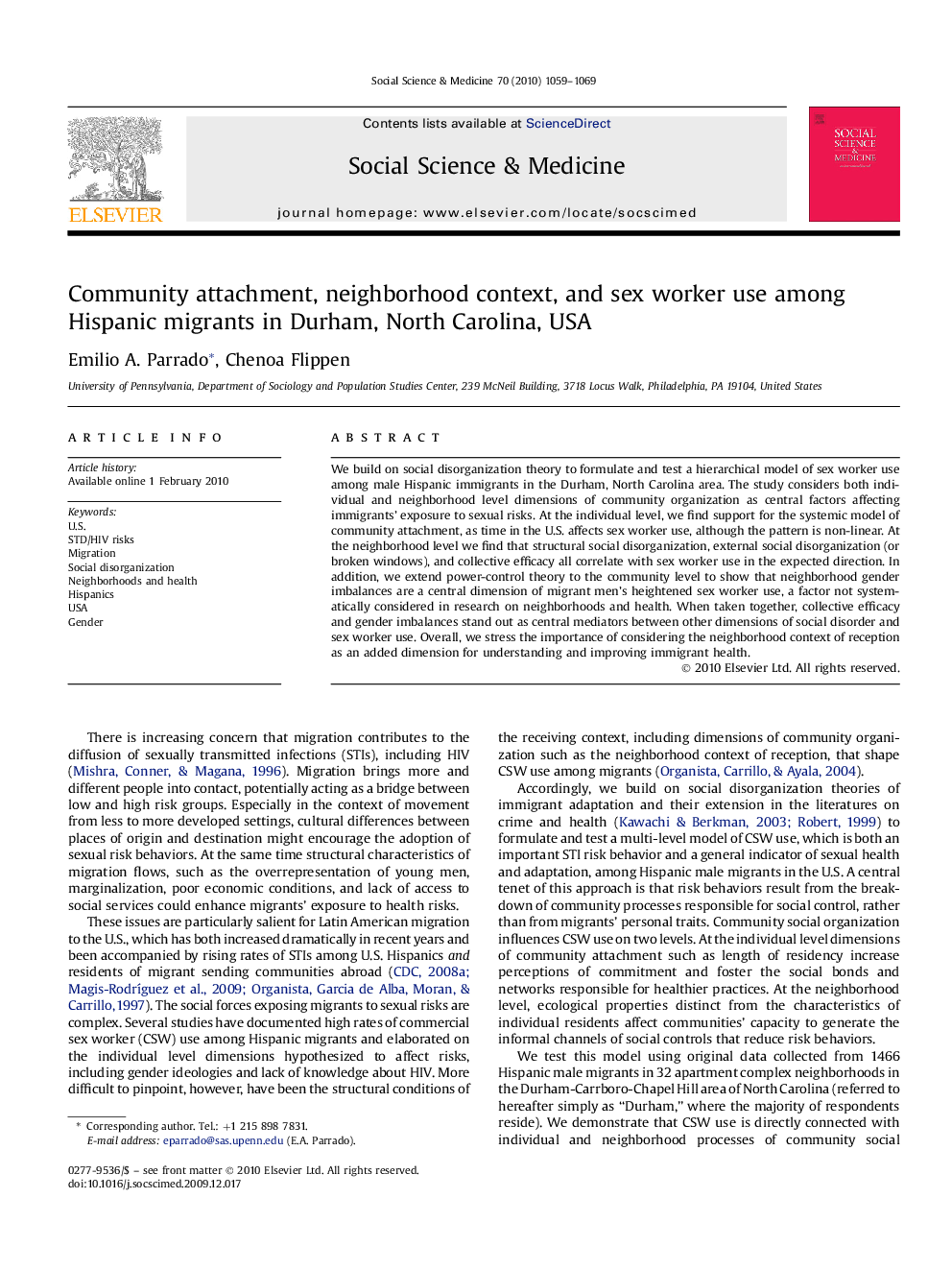| Article ID | Journal | Published Year | Pages | File Type |
|---|---|---|---|---|
| 953196 | Social Science & Medicine | 2010 | 11 Pages |
We build on social disorganization theory to formulate and test a hierarchical model of sex worker use among male Hispanic immigrants in the Durham, North Carolina area. The study considers both individual and neighborhood level dimensions of community organization as central factors affecting immigrants' exposure to sexual risks. At the individual level, we find support for the systemic model of community attachment, as time in the U.S. affects sex worker use, although the pattern is non-linear. At the neighborhood level we find that structural social disorganization, external social disorganization (or broken windows), and collective efficacy all correlate with sex worker use in the expected direction. In addition, we extend power-control theory to the community level to show that neighborhood gender imbalances are a central dimension of migrant men's heightened sex worker use, a factor not systematically considered in research on neighborhoods and health. When taken together, collective efficacy and gender imbalances stand out as central mediators between other dimensions of social disorder and sex worker use. Overall, we stress the importance of considering the neighborhood context of reception as an added dimension for understanding and improving immigrant health.
